When we peaked out the window at dawn’s early light, it was to rain-soaked streets and gray skies, a dampening first glimpse.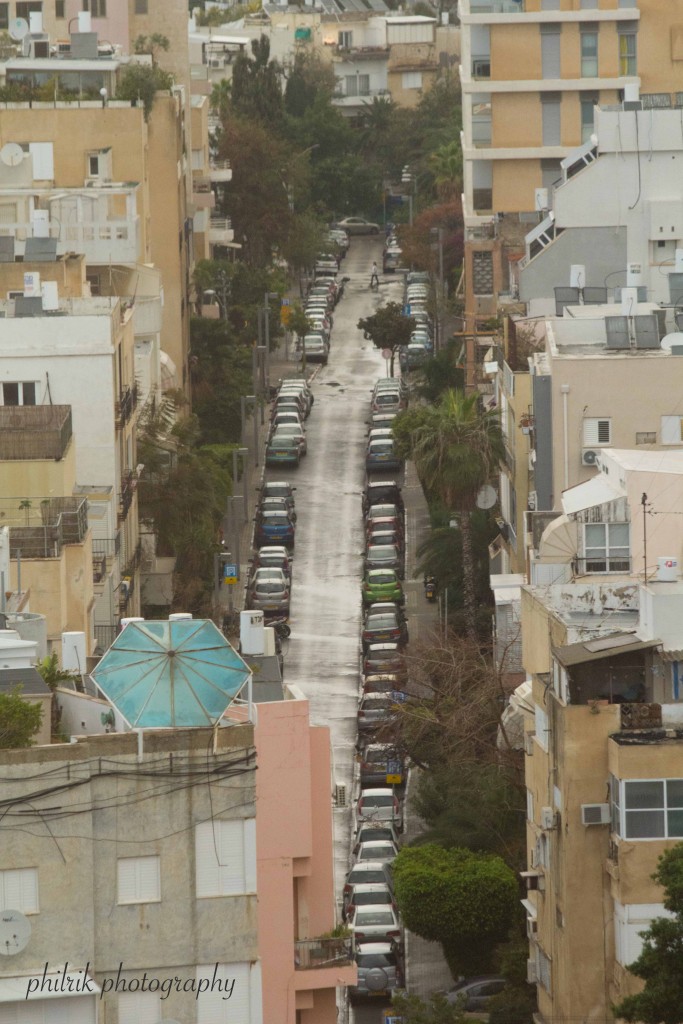 I was immediately thankful that my good man convinced me to pack both raincoat and umbrella. We were headed for a long stretch outdoors along the sea at a place built by Herod to impress Caesar Augustus – Caesarea Maritime.
I was immediately thankful that my good man convinced me to pack both raincoat and umbrella. We were headed for a long stretch outdoors along the sea at a place built by Herod to impress Caesar Augustus – Caesarea Maritime.
The first glimpse of Caesarea, however, is not Roman, but Crusader built, complete with moat.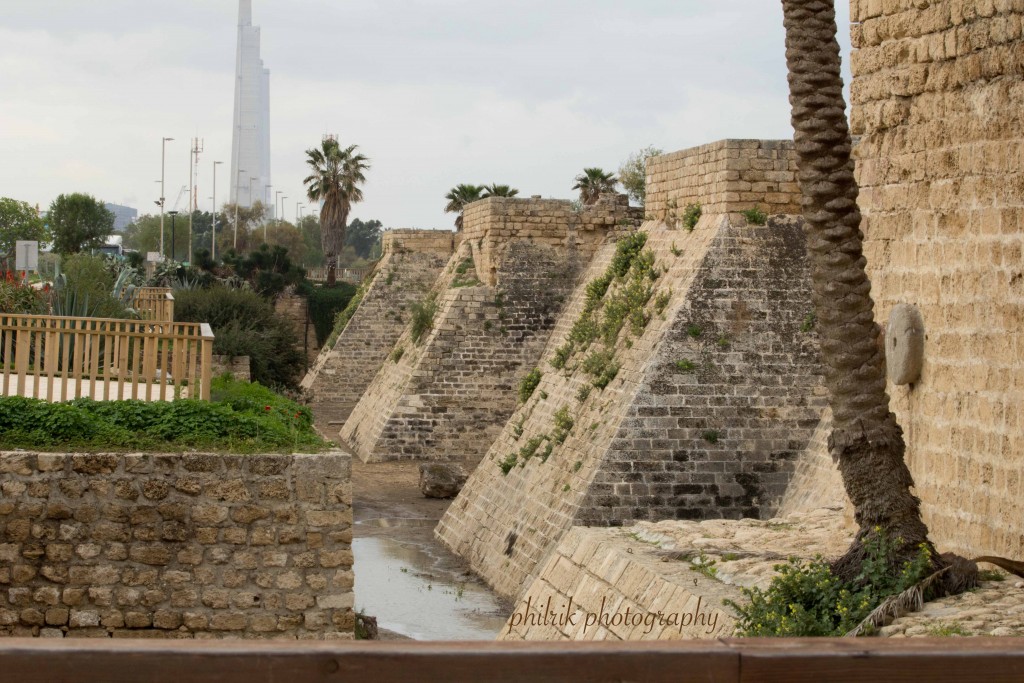 And first glimpses here do not disappoint.
And first glimpses here do not disappoint.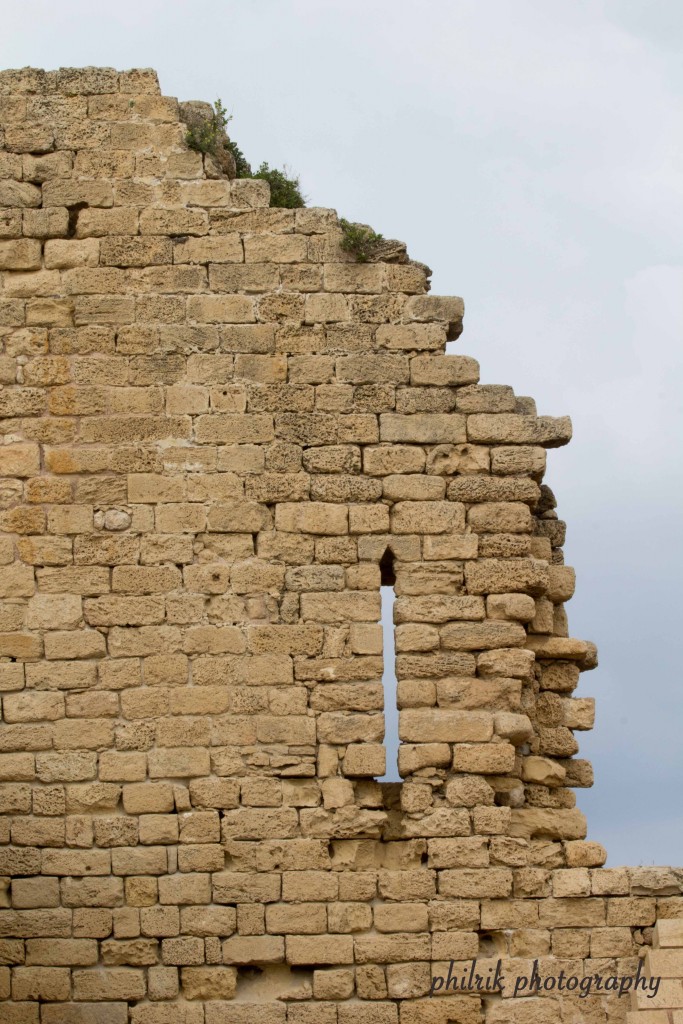 Nor do second or third glimpses.
Nor do second or third glimpses.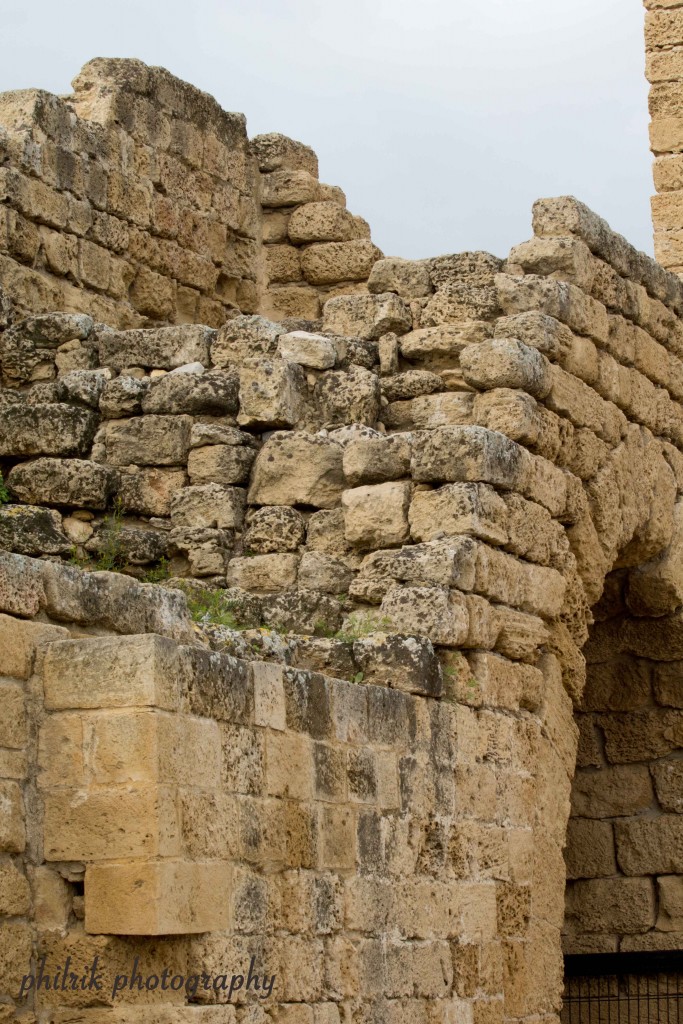 Come with me through the gate of a Crusader citadel-town built on top of the ruins of the Roman and Byzantine Empires.
Come with me through the gate of a Crusader citadel-town built on top of the ruins of the Roman and Byzantine Empires.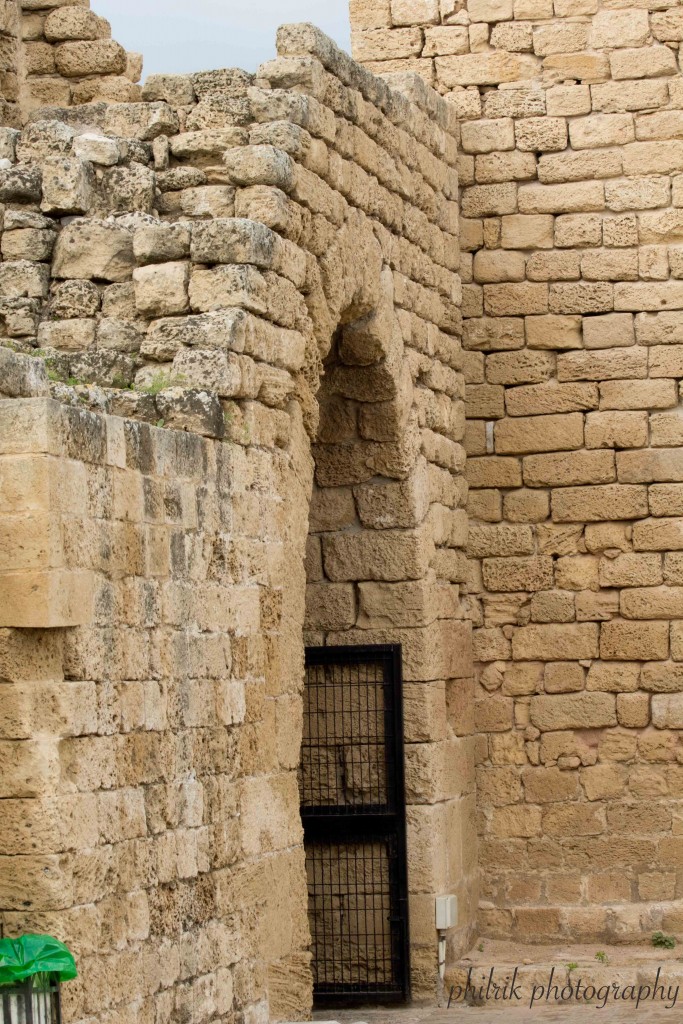 A wide angle lens is necessary to capture the scope of this place. For me, that’s a fish-eye. It’s the widest I own.
A wide angle lens is necessary to capture the scope of this place. For me, that’s a fish-eye. It’s the widest I own.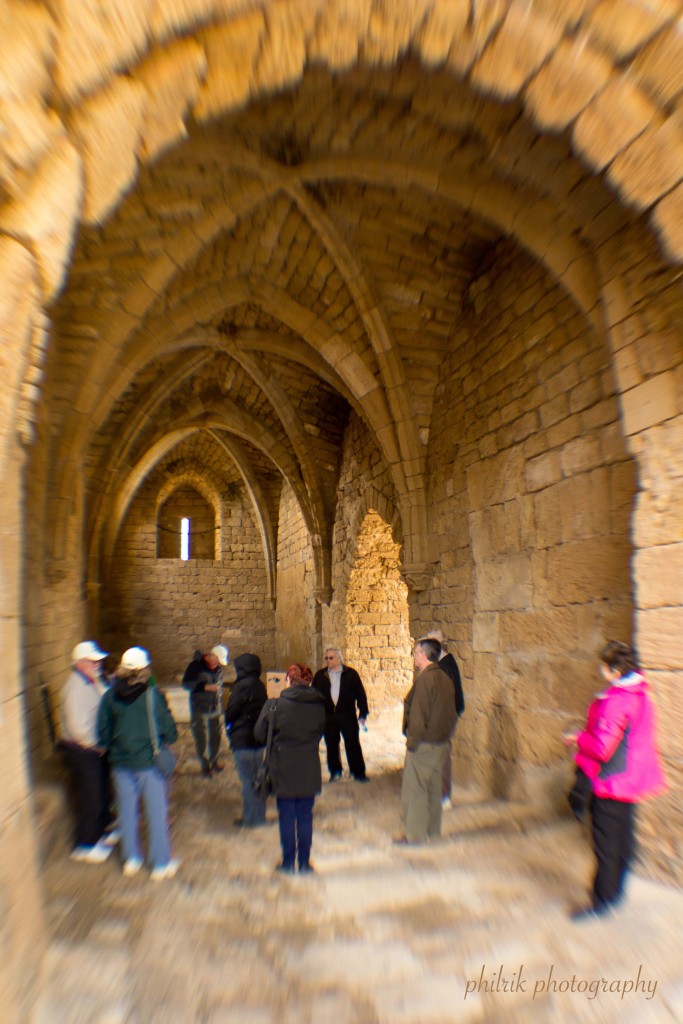 Just look at that ceiling!
Just look at that ceiling! 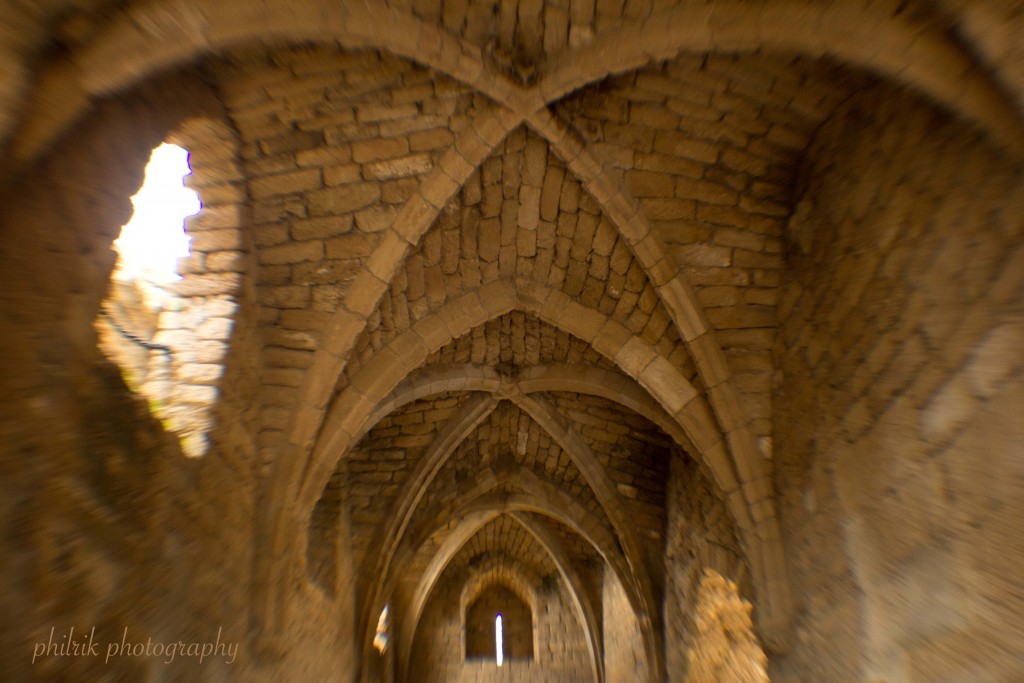 And the thickness of those walls!
And the thickness of those walls!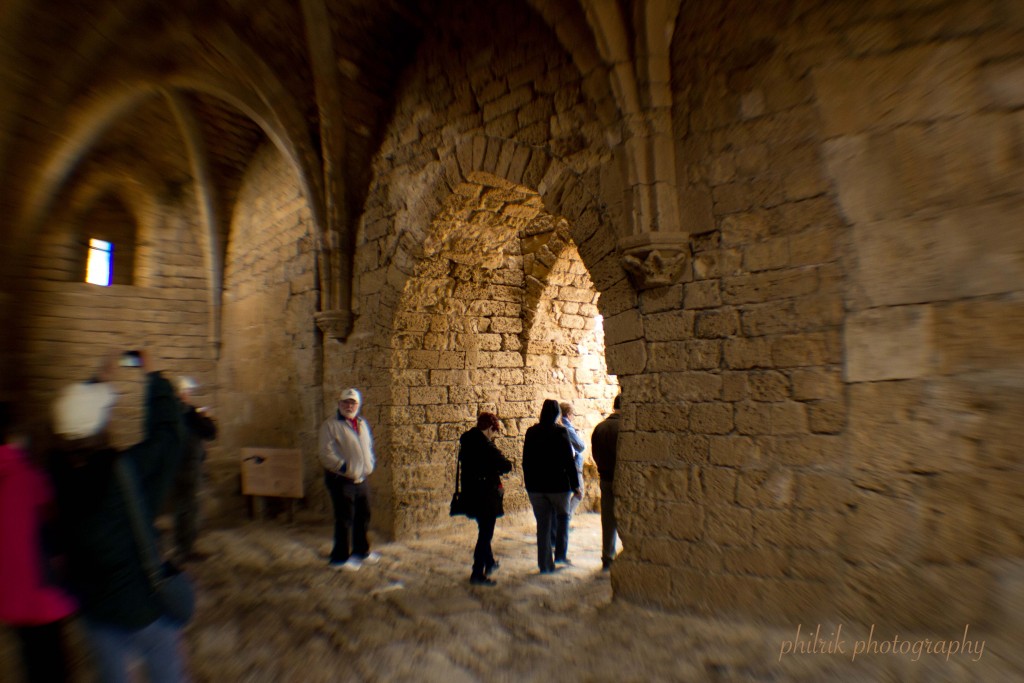 Did I mention the thickness of those walls?
Did I mention the thickness of those walls? 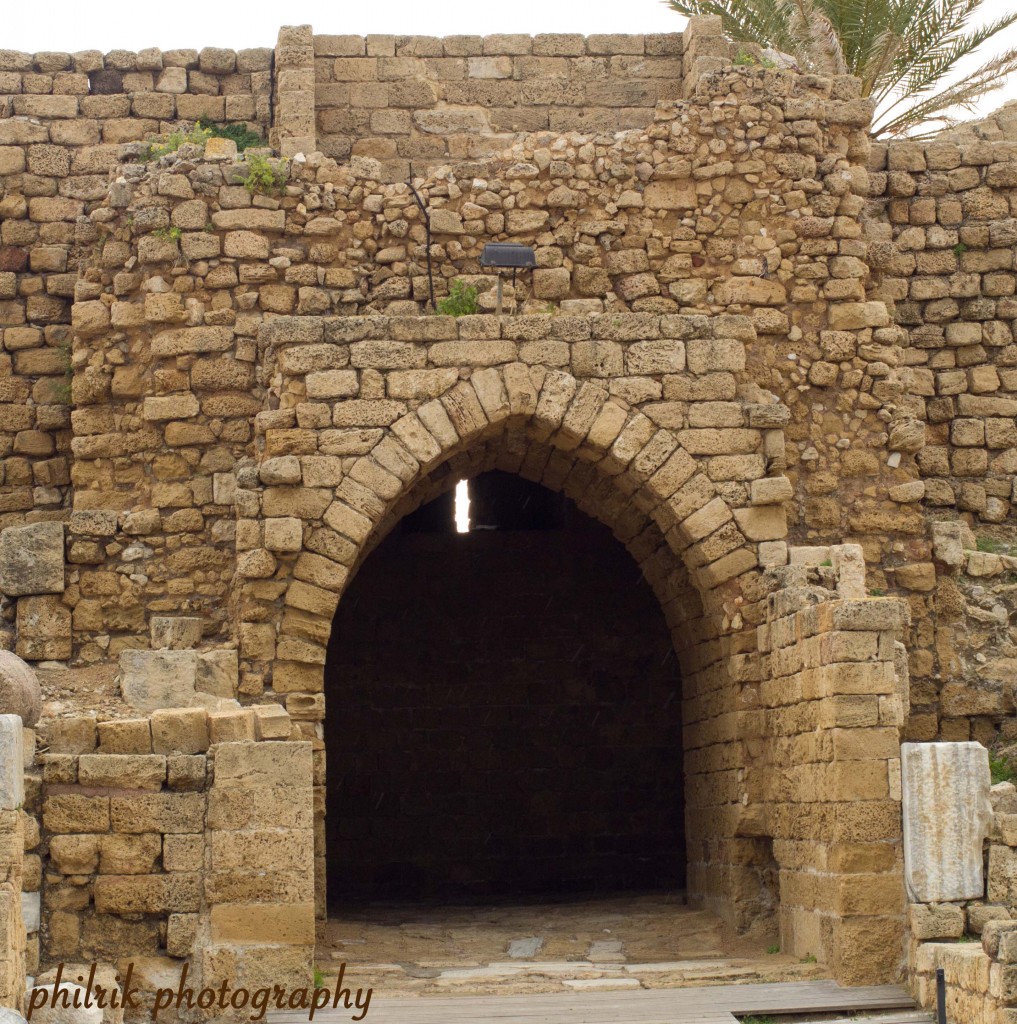 After pondering that for a moment, glance down around you. You may just notice big hunks of marble.
After pondering that for a moment, glance down around you. You may just notice big hunks of marble.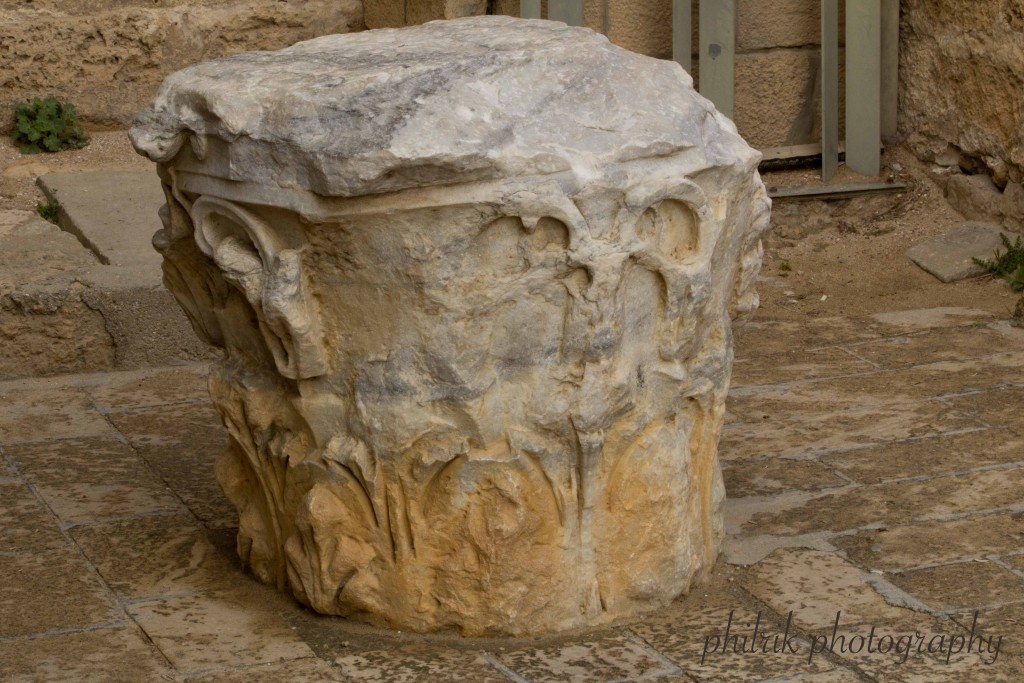 Gobs of marble.
Gobs of marble.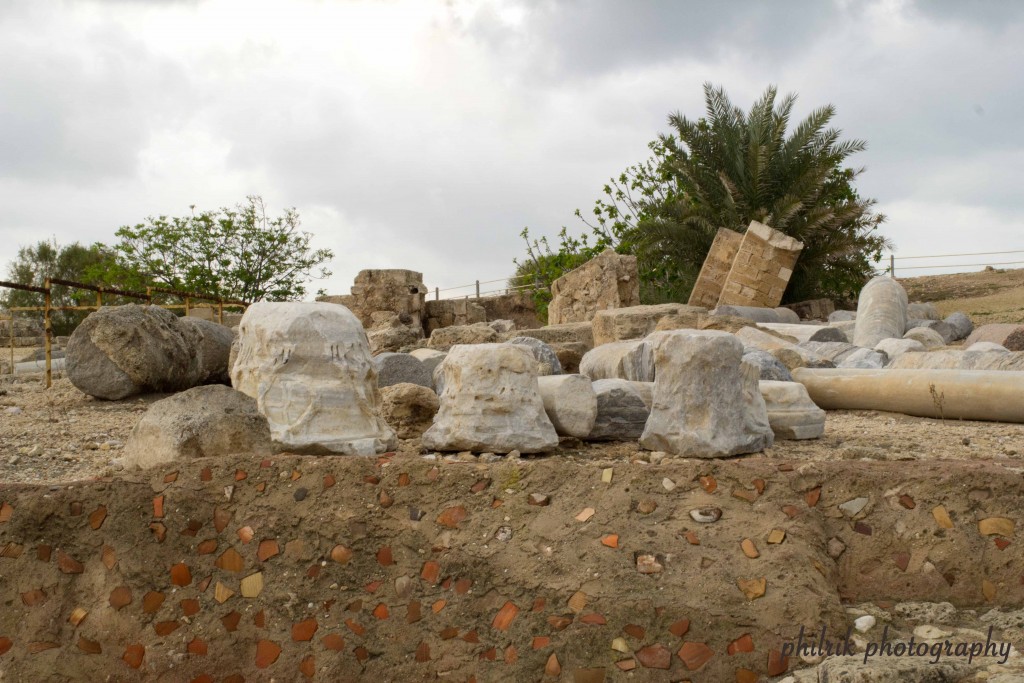
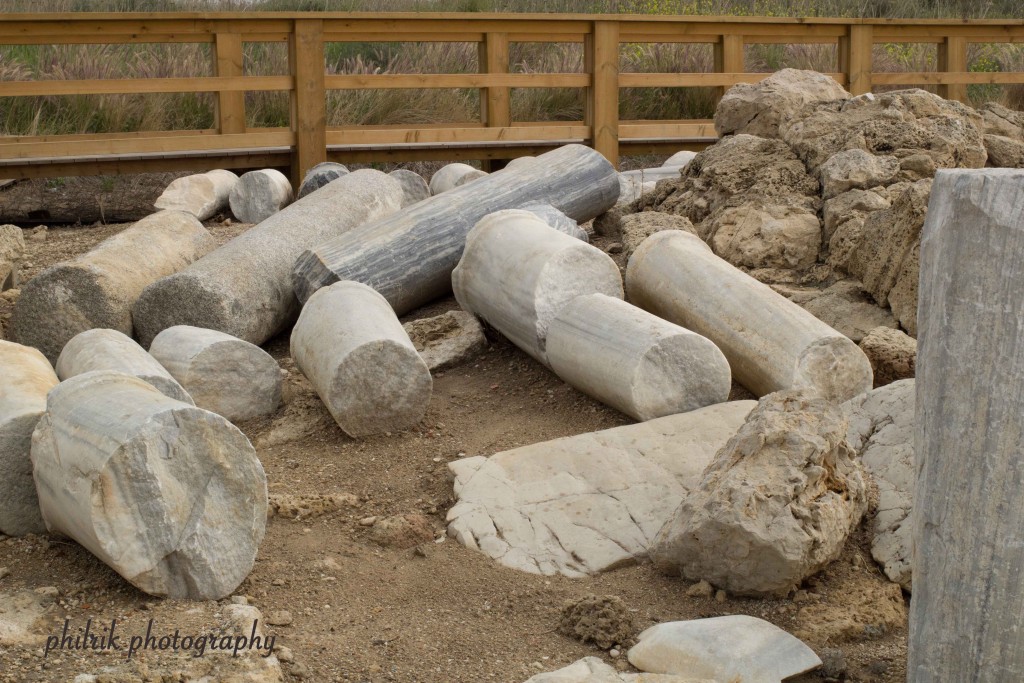 And if that’s not enough to make you wonder, let me direct you to the Mediterranean Sea and the remnants of King Herod’s amazing engineering feat, a deep-water harbor that welcomed worldwide trade to this Roman province.
And if that’s not enough to make you wonder, let me direct you to the Mediterranean Sea and the remnants of King Herod’s amazing engineering feat, a deep-water harbor that welcomed worldwide trade to this Roman province.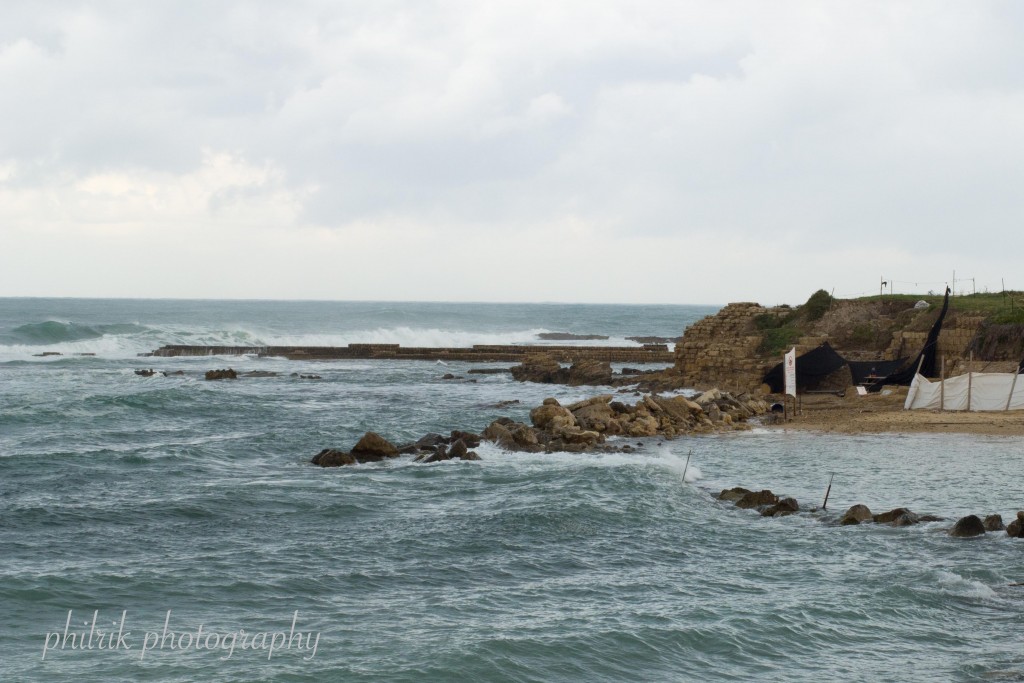 The south side of the harbor holds new construction on top of the remains of a Crusader tower that was built on the remains of the Roman harbor.
The south side of the harbor holds new construction on top of the remains of a Crusader tower that was built on the remains of the Roman harbor.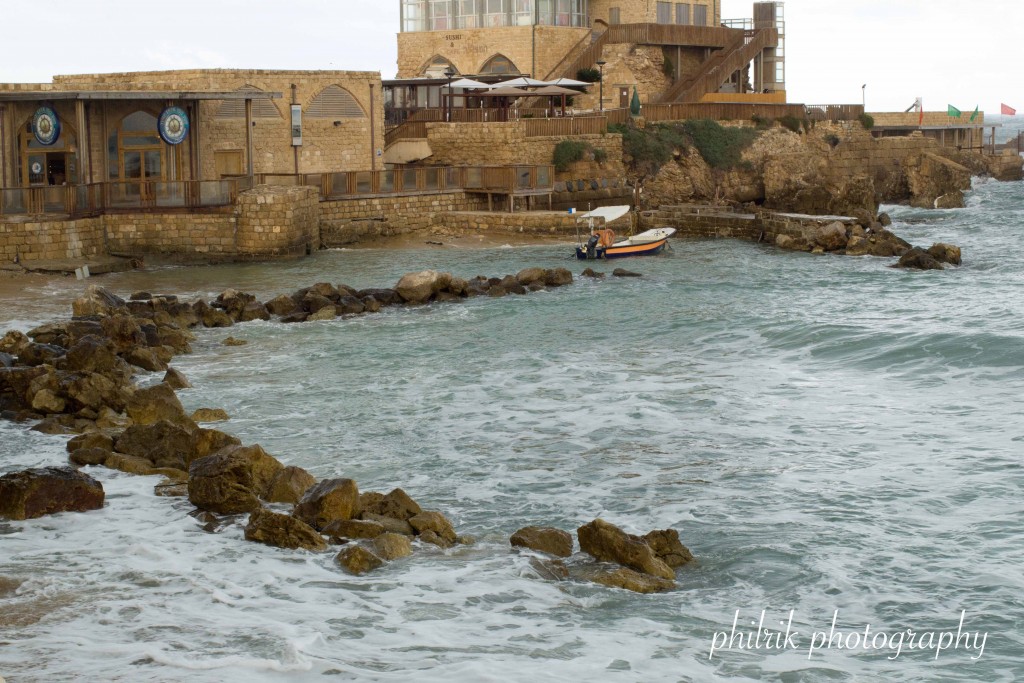
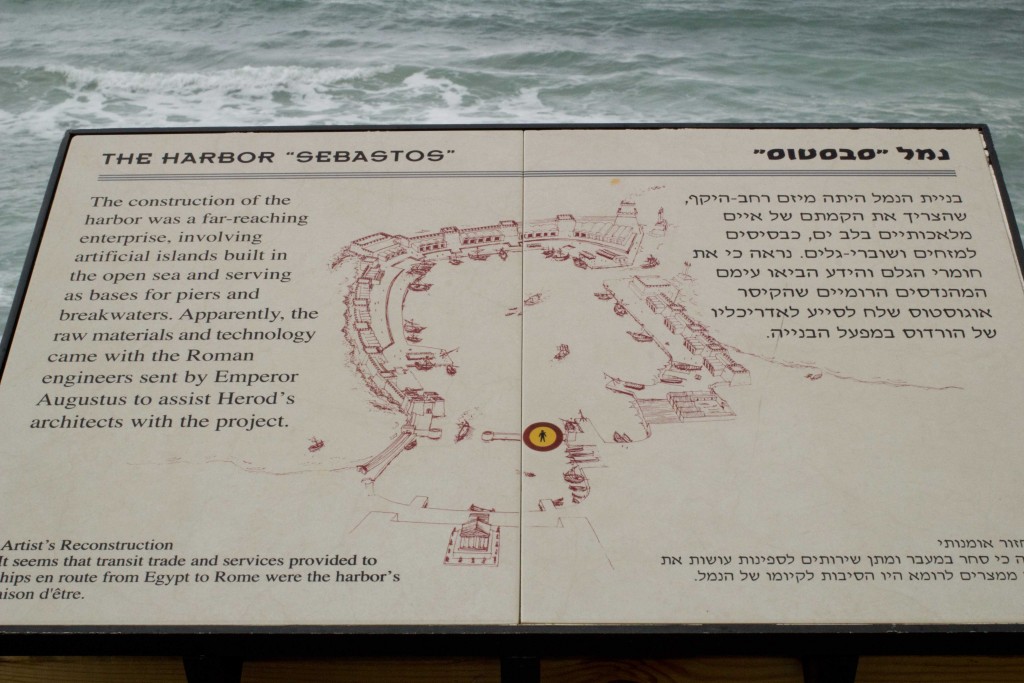 Caesarea was built by King Herod beginning in 20 B.C. as he strove to make an impression on Caesar Augustus. He constructed a massive harbor, palaces, hippodrome, and amphitheater, and made his city a thriving metropolis. It became the official residence of governors, including Pontius Pilate and lasted for 600 years under Roman governance. In 646, it fell to the Persians, who left a layer of their own construction on top of remains of the original city. No one built, rebuilt or reinforced Caesarea to the scale that Herod had first created.
Caesarea was built by King Herod beginning in 20 B.C. as he strove to make an impression on Caesar Augustus. He constructed a massive harbor, palaces, hippodrome, and amphitheater, and made his city a thriving metropolis. It became the official residence of governors, including Pontius Pilate and lasted for 600 years under Roman governance. In 646, it fell to the Persians, who left a layer of their own construction on top of remains of the original city. No one built, rebuilt or reinforced Caesarea to the scale that Herod had first created. This photo has nothing to do with all that. I simply love the aesthetic of the sculpture/tree pairing. It’s okay to take a moment to just enjoy it. But then we need to keep moving. There’s so much more to see. Next, you will get some idea of the layers upon layers of construction. These marble columns lay where they were uncovered, under floors and streets.
This photo has nothing to do with all that. I simply love the aesthetic of the sculpture/tree pairing. It’s okay to take a moment to just enjoy it. But then we need to keep moving. There’s so much more to see. Next, you will get some idea of the layers upon layers of construction. These marble columns lay where they were uncovered, under floors and streets.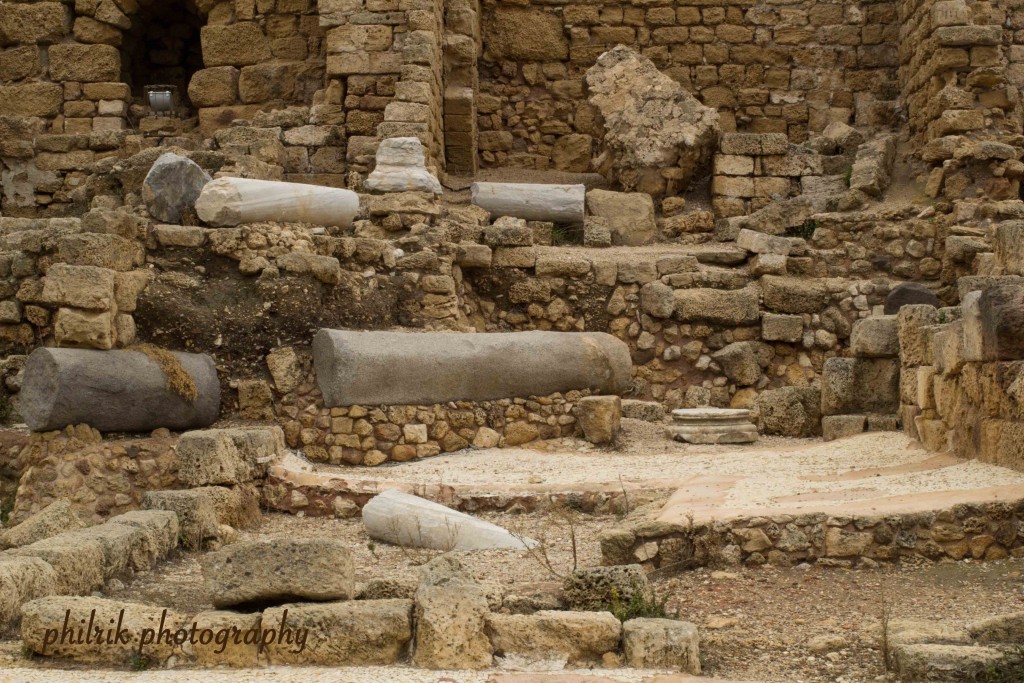 Turning back toward the Sea for just a moment, you get a good view of this mosque built in 1809 by Serbian Muslims. The grassy area in the foreground is believed to have been under water in Herod’s day, and a likely place for the Apostle Paul to have boarded a vessel for Rome after appealing to Caesar.
Turning back toward the Sea for just a moment, you get a good view of this mosque built in 1809 by Serbian Muslims. The grassy area in the foreground is believed to have been under water in Herod’s day, and a likely place for the Apostle Paul to have boarded a vessel for Rome after appealing to Caesar.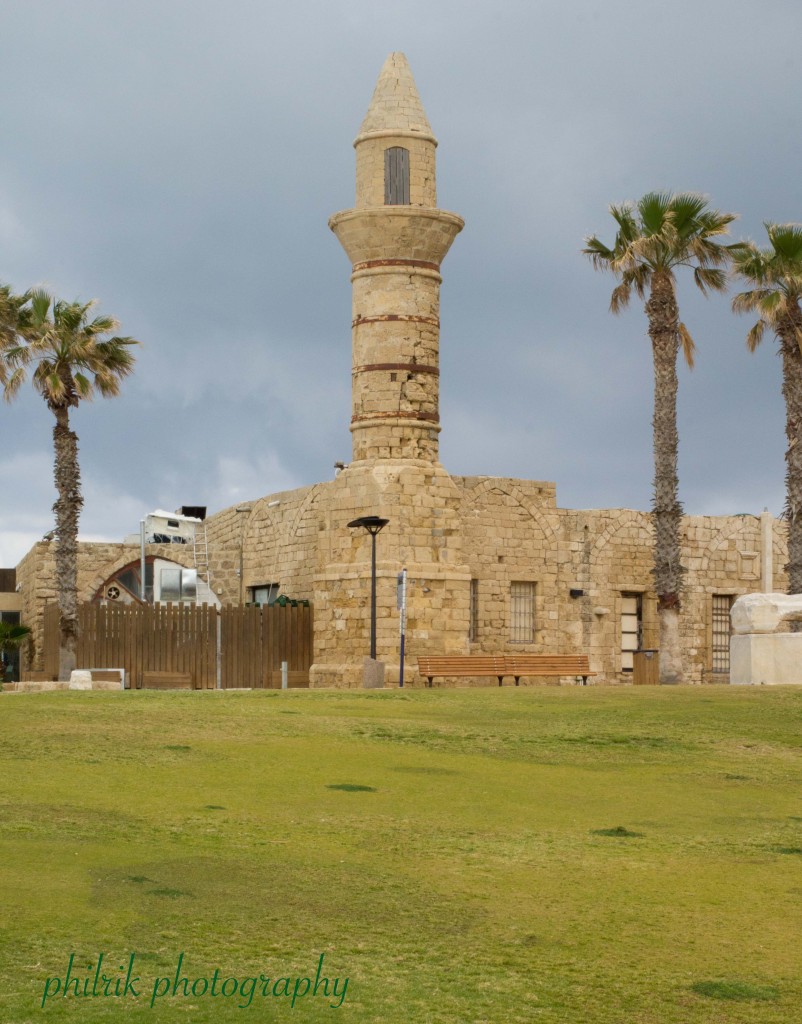 If you turn around then, you will see the remains of a Byzantine shop-lined street that stood along the waterfront.
If you turn around then, you will see the remains of a Byzantine shop-lined street that stood along the waterfront.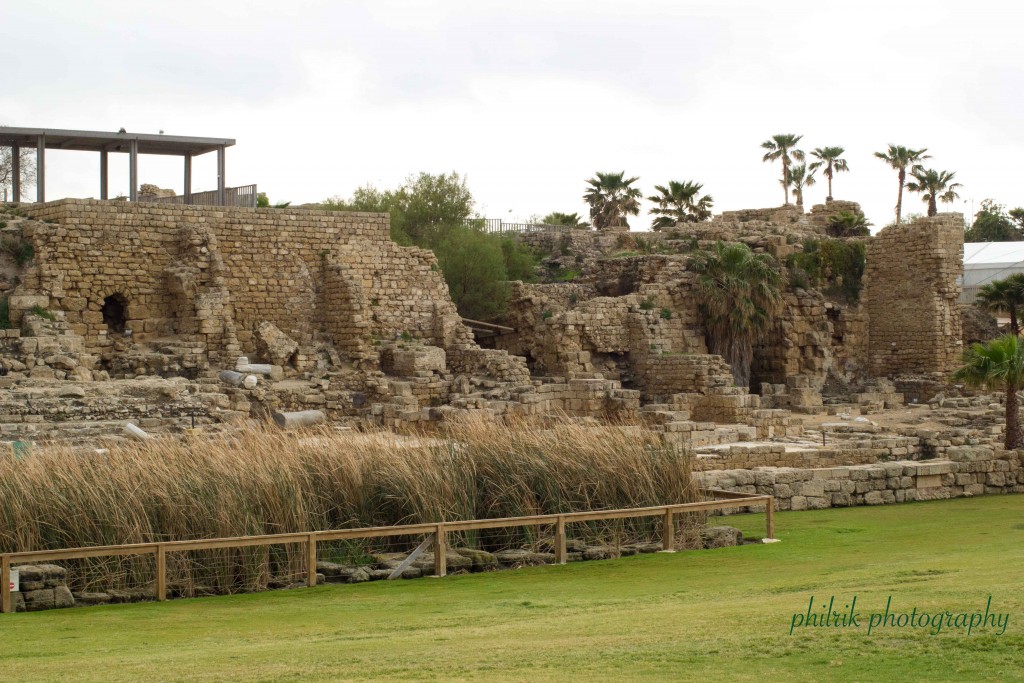 And this is the photogenic end of that Byzantine street.
And this is the photogenic end of that Byzantine street.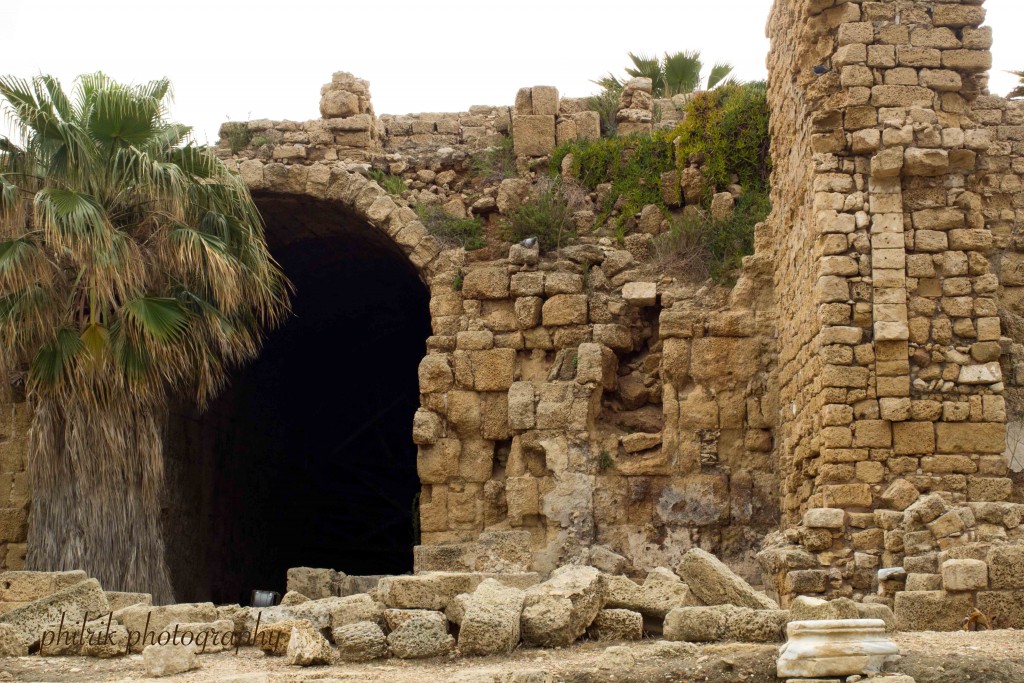 It ushers us into the layers of Roman construction, with all its fabulous arches.
It ushers us into the layers of Roman construction, with all its fabulous arches. It’s impossible to avoid the arches. And who would want to avoid the arches, given the choice. Not I.
It’s impossible to avoid the arches. And who would want to avoid the arches, given the choice. Not I. But before I get too carried away by arches, you must see this governor’s bath. He was enough of a bigshot to warrant marble-lined tubs and marble columns in his personal space. Just a little aside before we head into the hippodrome, because everyone needs a bathroom break before the big event.
But before I get too carried away by arches, you must see this governor’s bath. He was enough of a bigshot to warrant marble-lined tubs and marble columns in his personal space. Just a little aside before we head into the hippodrome, because everyone needs a bathroom break before the big event.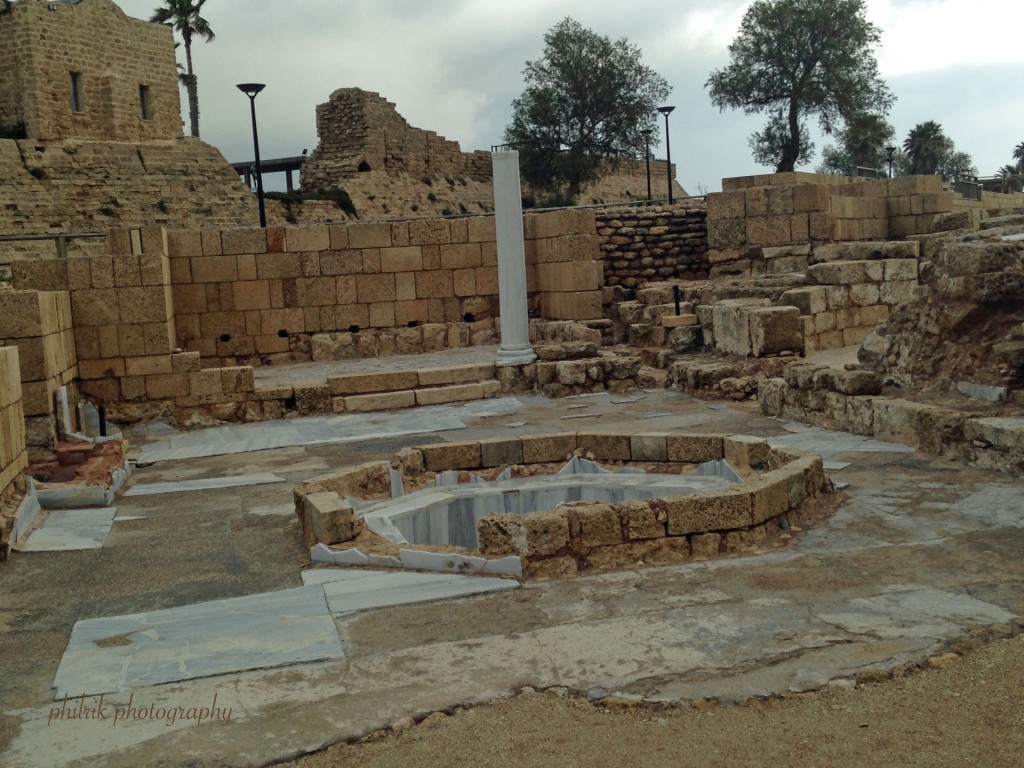 As you leave the bathroom, don’t miss the fabulously tiled floor in the next room. Tiny mosaic tiles create this flooring. Art was not just for the walls where Rome was concerned.
As you leave the bathroom, don’t miss the fabulously tiled floor in the next room. Tiny mosaic tiles create this flooring. Art was not just for the walls where Rome was concerned. When you get over the intricate detail on that piece of flooring and raise your eyes, you will see it in front of you – the Caesarean hippodrome. The big, open space stretching into the distance was once the scene of thundering chariot races. Up on the rise, you catch your first sight of important government buildings we’ll get to later in the tour. The woman in the foreground is Susan, our brilliant tour guide.
When you get over the intricate detail on that piece of flooring and raise your eyes, you will see it in front of you – the Caesarean hippodrome. The big, open space stretching into the distance was once the scene of thundering chariot races. Up on the rise, you catch your first sight of important government buildings we’ll get to later in the tour. The woman in the foreground is Susan, our brilliant tour guide. 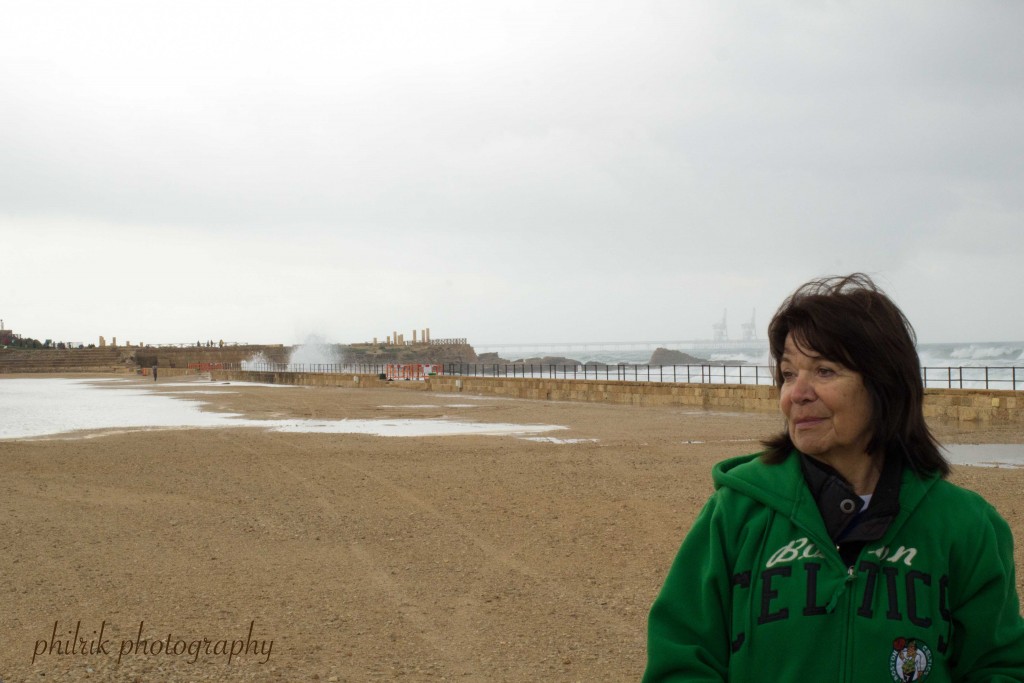 This is the turn at the end of that dirt track, a little tight for a thundering chariot pulled by four horses, if you ask me, let alone multiple chariots. I’m guessing it made for some racing excitement, though. The low walls lining the arena were covered in beautifully painted tiles.
This is the turn at the end of that dirt track, a little tight for a thundering chariot pulled by four horses, if you ask me, let alone multiple chariots. I’m guessing it made for some racing excitement, though. The low walls lining the arena were covered in beautifully painted tiles.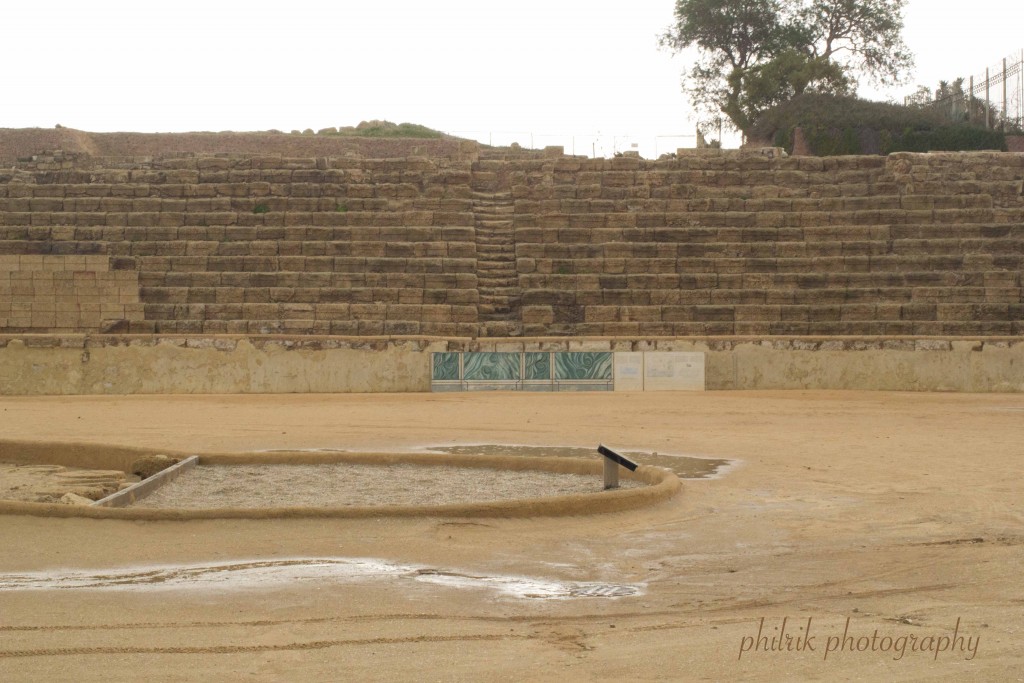 Would you like a seat in the corner of the arena?
Would you like a seat in the corner of the arena?
 It might give an unencumbered view of the start and the horse stalls. (And the aforementioned fabulous arches).
It might give an unencumbered view of the start and the horse stalls. (And the aforementioned fabulous arches).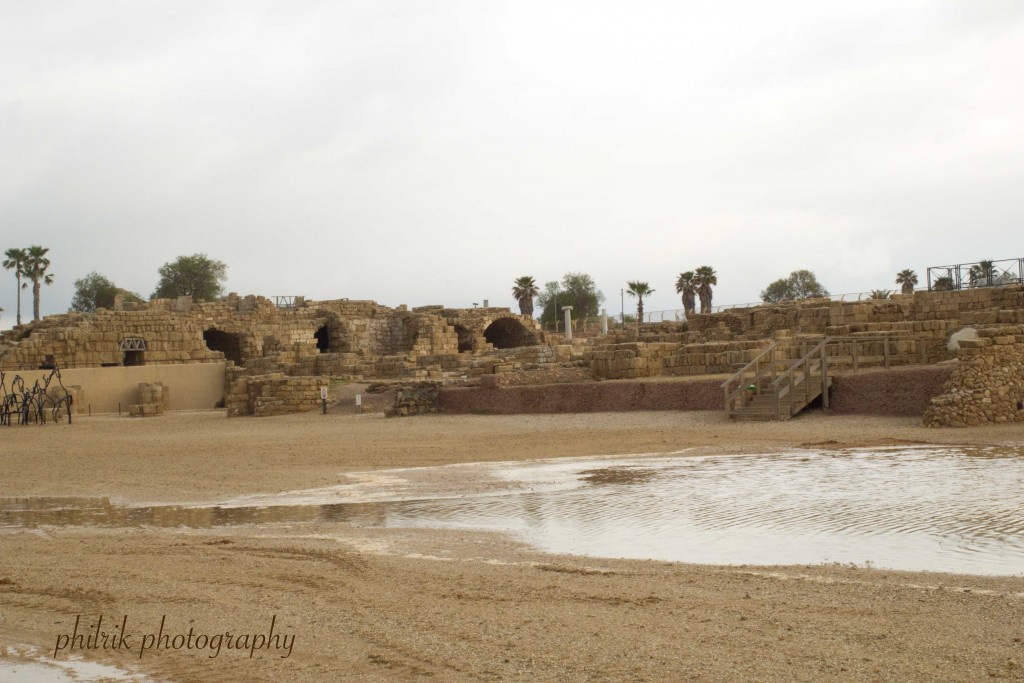 A close-up of the stalls.
A close-up of the stalls. The next view is meant to give you a sense of the layer-by-layer excavating that has taken place in Caesarea Maritime. It’s remarkable.
The next view is meant to give you a sense of the layer-by-layer excavating that has taken place in Caesarea Maritime. It’s remarkable. Take one last look, will you, at all we covered on this history-saturated tour. The Crusader tower built on top of Herod’s harbor rubble is on the very left in the distance. The mosque tower is in the center. Directly behind those fabulous Roman arches you can see on the right, stands the Crusader gate through which we entered Caesarea, and of course, you can’t miss the hippodrome, barely saved from the crashing Mediterranean Sea by a small stone wall.
Take one last look, will you, at all we covered on this history-saturated tour. The Crusader tower built on top of Herod’s harbor rubble is on the very left in the distance. The mosque tower is in the center. Directly behind those fabulous Roman arches you can see on the right, stands the Crusader gate through which we entered Caesarea, and of course, you can’t miss the hippodrome, barely saved from the crashing Mediterranean Sea by a small stone wall. There is much more to see in Caesarea. I have spent hours poring over pictures, written history, and artists’ renditions trying to keep it all straight in my mind. I’m still not always sure that it is. Maybe a little photo tour will only confuse, but I hope it will inspire you to read a little bit more. Sometimes all we need is a first glimpse to usher us through the gate to stand in front of the fabulous arches.
There is much more to see in Caesarea. I have spent hours poring over pictures, written history, and artists’ renditions trying to keep it all straight in my mind. I’m still not always sure that it is. Maybe a little photo tour will only confuse, but I hope it will inspire you to read a little bit more. Sometimes all we need is a first glimpse to usher us through the gate to stand in front of the fabulous arches.
©Erika Rice
